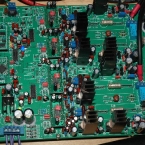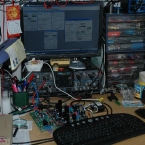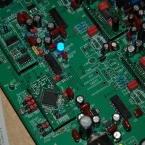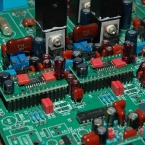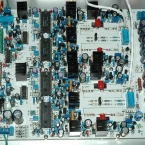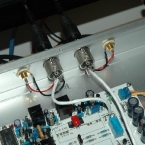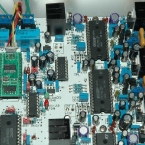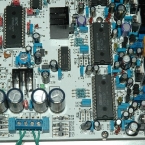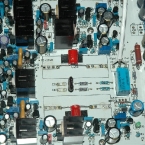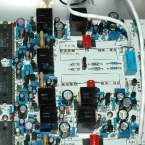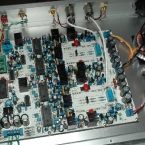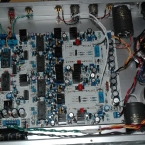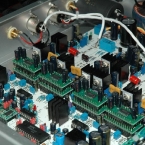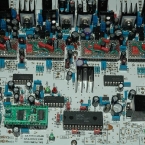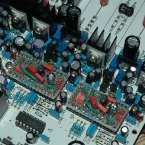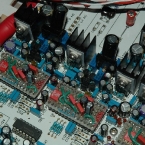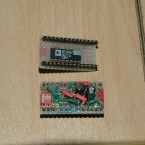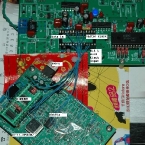Finally D1V33 is working at 24 bit and 96k Fs after using the better digital filter NPC SM5847 and PCM1704. Both chips are put on a converter board and plug into D1V33.
The set has been tested using Audio Precision and confirm the set is working at 24 bit & 96kHz sampling frequency. The FFT measurement are attached below:
D1V33 FFT with the 1kHz signal filtered off, very low noise floor -135dBV!
On the last photo, you can see that I change the decouple capacitors for Servo DC, Ref DC, BPO DC pins of PCM1704 to Black Gate N series and Elna Stargate type. The result is that the bass performance of PCM1704 is much better than using FC capacitor. Now the bass is as deep as PCM63 but with a little bit better clarity in all aspect.
Here is the FFT at -90dbFS and -110dbFS digital signal and you can see the harmonics is better than the on posted on PCM1704 Datasheet.
D1V33 FFT -90dbFS 96k 24bit 5847+1704
D1V33 FFT -110dbFS 96k 24bit 5847+1704
Frequency response and Distortion vs Frequency:
Freq Response & Distortion D1V33 5847+1704
Update on Jan 7th, 2010:
After listening for a week, the conclusion is that PCM1704 bass response is still way far away from PCM63 DAC in the D1V33 platform. It is still inline with the poorer design of the current output of PCM1704 relative to PCM63.
